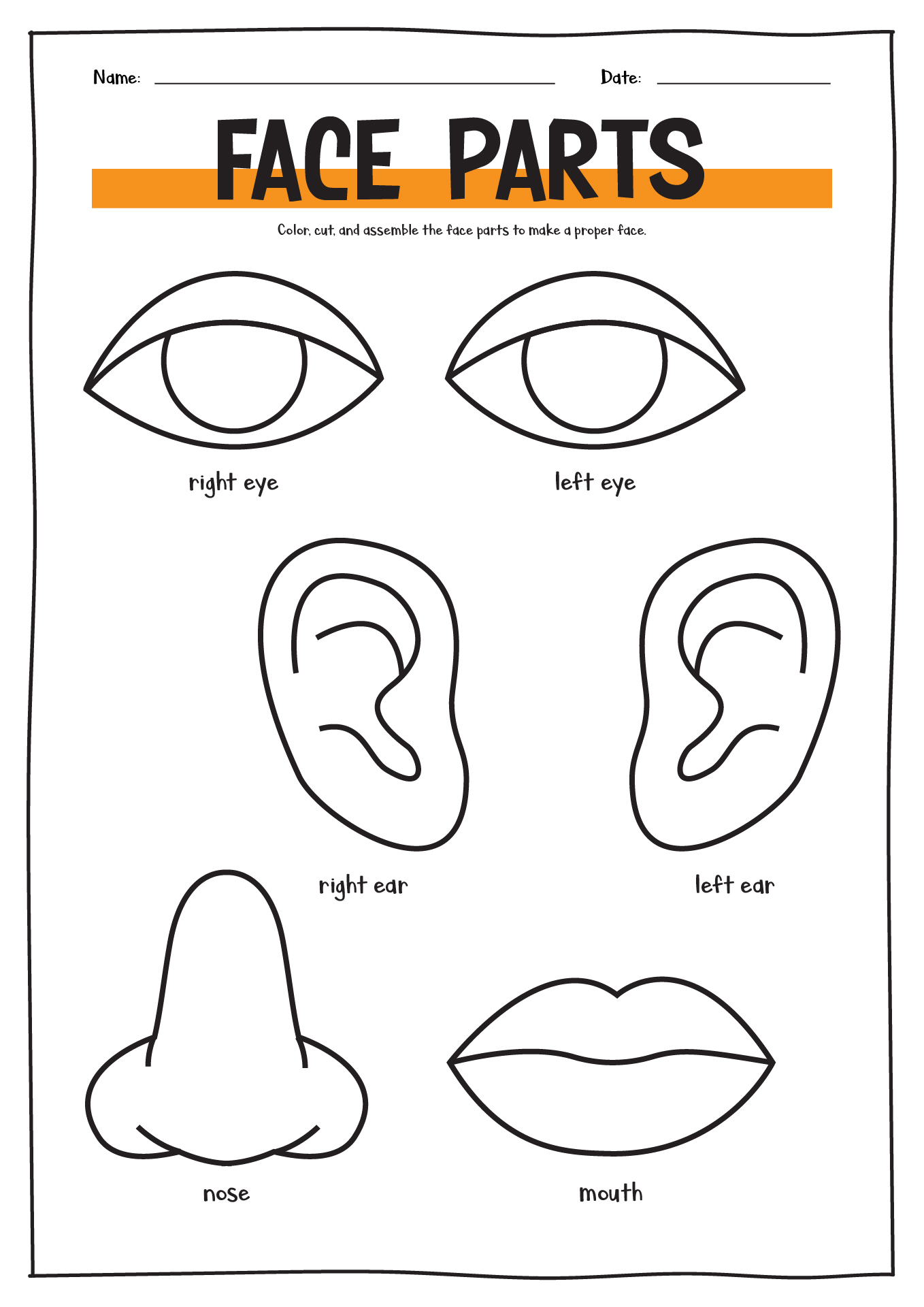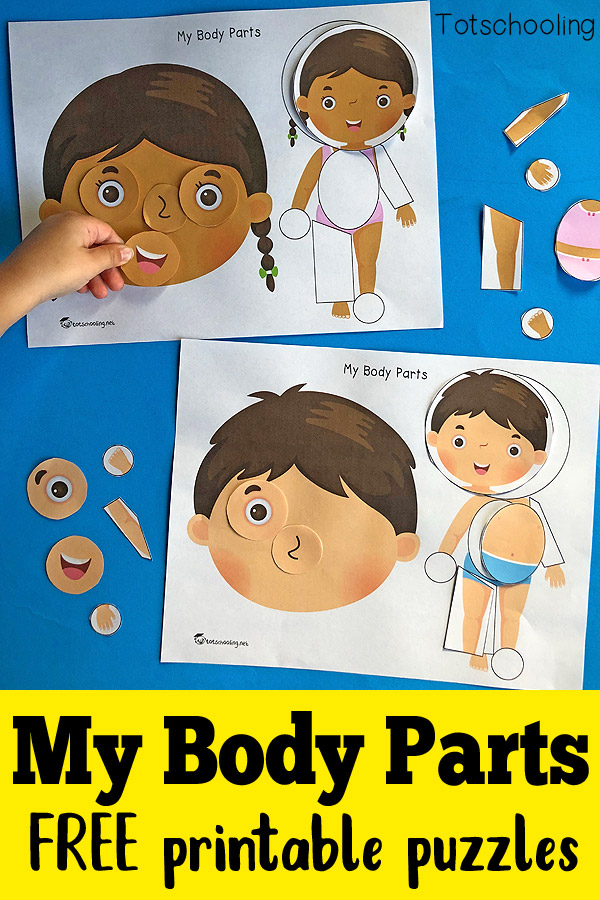In today’s digital age, teaching young children can be made easier and more engaging with the help of various educational resources available online. One such resource that has gained popularity among educators and parents alike is worksheets. Worksheets provide a structured and interactive approach to learning, making it easier for children to grasp and retain new information. In this post, we will explore some insightful worksheets related to face parts that can be utilized to facilitate early childhood education.
Worksheets for Face Parts
 One of the first worksheets we’ll discuss is titled “Worksheets pinosundaki Pin.” This visually appealing worksheet features colorful illustrations of various face parts, such as eyes, nose, and mouth. It allows young children to identify and label each face part, promoting their understanding of facial anatomy.
One of the first worksheets we’ll discuss is titled “Worksheets pinosundaki Pin.” This visually appealing worksheet features colorful illustrations of various face parts, such as eyes, nose, and mouth. It allows young children to identify and label each face part, promoting their understanding of facial anatomy.
 Another interesting worksheet is titled “Pin on TODDLER ACTIVITIES.” This worksheet incorporates fun and interactive activities, such as coloring and matching games, to help children explore different face parts and their functions. It not only enhances their cognitive skills but also promotes their fine motor skills development.
Another interesting worksheet is titled “Pin on TODDLER ACTIVITIES.” This worksheet incorporates fun and interactive activities, such as coloring and matching games, to help children explore different face parts and their functions. It not only enhances their cognitive skills but also promotes their fine motor skills development.
 The worksheet “Pin on kid” introduces children to various emotions and their corresponding facial expressions. Through this worksheet, children can identify different emotions, such as happiness, sadness, and anger, by observing the corresponding changes in facial features. This activity enhances their emotional intelligence and empathy towards others.
The worksheet “Pin on kid” introduces children to various emotions and their corresponding facial expressions. Through this worksheet, children can identify different emotions, such as happiness, sadness, and anger, by observing the corresponding changes in facial features. This activity enhances their emotional intelligence and empathy towards others.
 A worksheet titled “Result with image for parts of the face worksheets | Body preschool” focuses on developing children’s vocabulary related to face parts. By labeling the different face parts, children enhance their language skills and expand their knowledge of facial anatomy. This worksheet can be particularly beneficial for children learning English as a second language.
A worksheet titled “Result with image for parts of the face worksheets | Body preschool” focuses on developing children’s vocabulary related to face parts. By labeling the different face parts, children enhance their language skills and expand their knowledge of facial anatomy. This worksheet can be particularly beneficial for children learning English as a second language.
 The worksheet “10 Best Images of Face Parts Worksheet For Kindergarten - Printable” is a comprehensive resource that covers various face parts in detail. It includes activities like tracing, coloring, and labeling, ensuring a well-rounded learning experience for children. The engaging visuals and interactive tasks make this worksheet an effective tool for young learners.
The worksheet “10 Best Images of Face Parts Worksheet For Kindergarten - Printable” is a comprehensive resource that covers various face parts in detail. It includes activities like tracing, coloring, and labeling, ensuring a well-rounded learning experience for children. The engaging visuals and interactive tasks make this worksheet an effective tool for young learners.
 The “Blank Face Templates | Printable Face Shapes for Kids | Face template” worksheet allows children to unleash their creativity by designing and decorating their own faces. This open-ended activity encourages self-expression and imagination, fostering children’s artistic skills and boosting their confidence.
The “Blank Face Templates | Printable Face Shapes for Kids | Face template” worksheet allows children to unleash their creativity by designing and decorating their own faces. This open-ended activity encourages self-expression and imagination, fostering children’s artistic skills and boosting their confidence.
 In the “Pin on Projects to try” worksheet, children are provided with a set of face parts that need to be cut out and glued onto a blank face template. This hands-on activity promotes fine motor skills and spatial awareness while allowing children to create personalized and unique faces.
In the “Pin on Projects to try” worksheet, children are provided with a set of face parts that need to be cut out and glued onto a blank face template. This hands-on activity promotes fine motor skills and spatial awareness while allowing children to create personalized and unique faces.
 The worksheet “Printable face parts | Click the image, wait for it to load, right” engages children in a matching activity where they have to match the correct face parts to the corresponding labels. This activity enhances their cognitive abilities, visual discrimination, and logical reasoning skills.
The worksheet “Printable face parts | Click the image, wait for it to load, right” engages children in a matching activity where they have to match the correct face parts to the corresponding labels. This activity enhances their cognitive abilities, visual discrimination, and logical reasoning skills.
 Lastly, we have the “My Body Parts - Printable Puzzles” worksheet. Although not solely focused on face parts, this worksheet includes puzzles that involve identifying and matching different body parts. It provides a holistic approach to understanding the human body and reinforces the knowledge of face parts within the broader context of body awareness.
Lastly, we have the “My Body Parts - Printable Puzzles” worksheet. Although not solely focused on face parts, this worksheet includes puzzles that involve identifying and matching different body parts. It provides a holistic approach to understanding the human body and reinforces the knowledge of face parts within the broader context of body awareness.
Enhance Early Learning with Face Parts Worksheets
These face parts worksheets serve as valuable resources for educators, parents, and caregivers who aim to provide a well-rounded early childhood education. By incorporating such worksheets into lessons and activities, children can develop cognitive, language, emotional, and fine motor skills in an engaging and interactive manner. Furthermore, these worksheets promote critical thinking, problem-solving, and creativity, essential skills for life-long learning.
It is important to note that these worksheets should be used in conjunction with other teaching methods, such as hands-on activities and group discussions, to provide a holistic and comprehensive learning experience. Additionally, educators and parents should tailor the worksheets to meet the unique needs and abilities of each child, ensuring that the content is age-appropriate and aligned with their developmental stage.
In conclusion, face parts worksheets offer a fun and effective way to introduce young children to facial anatomy, emotions, and vocabulary. These educational resources promote holistic skill development, inspire creativity, and foster a love for learning. By incorporating these worksheets into early childhood education, we can create a solid foundation for children’s future academic success and personal growth.